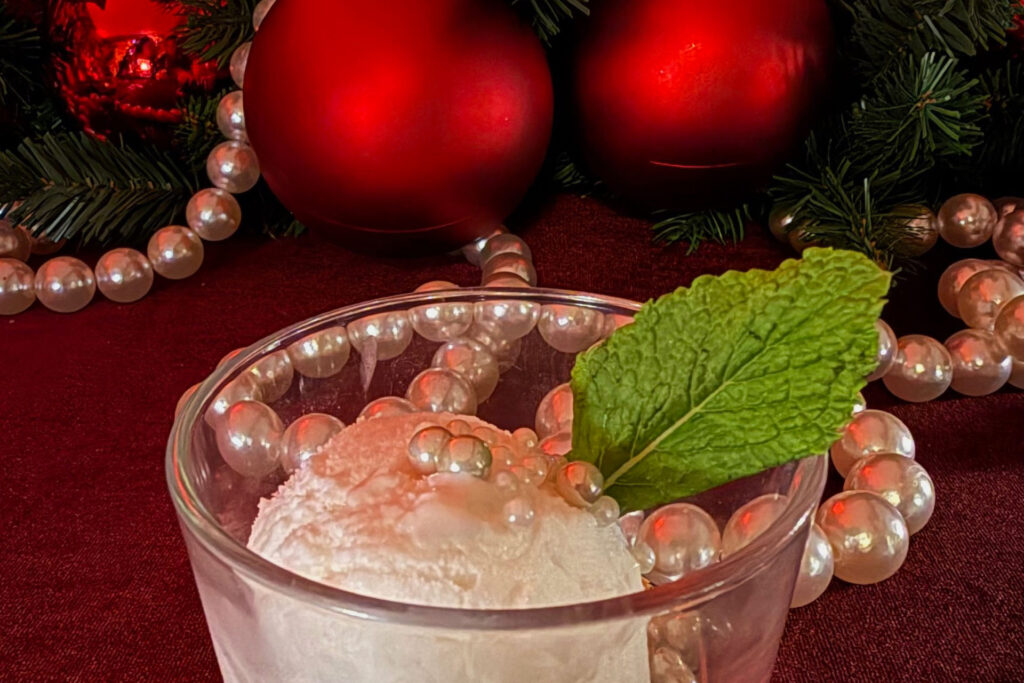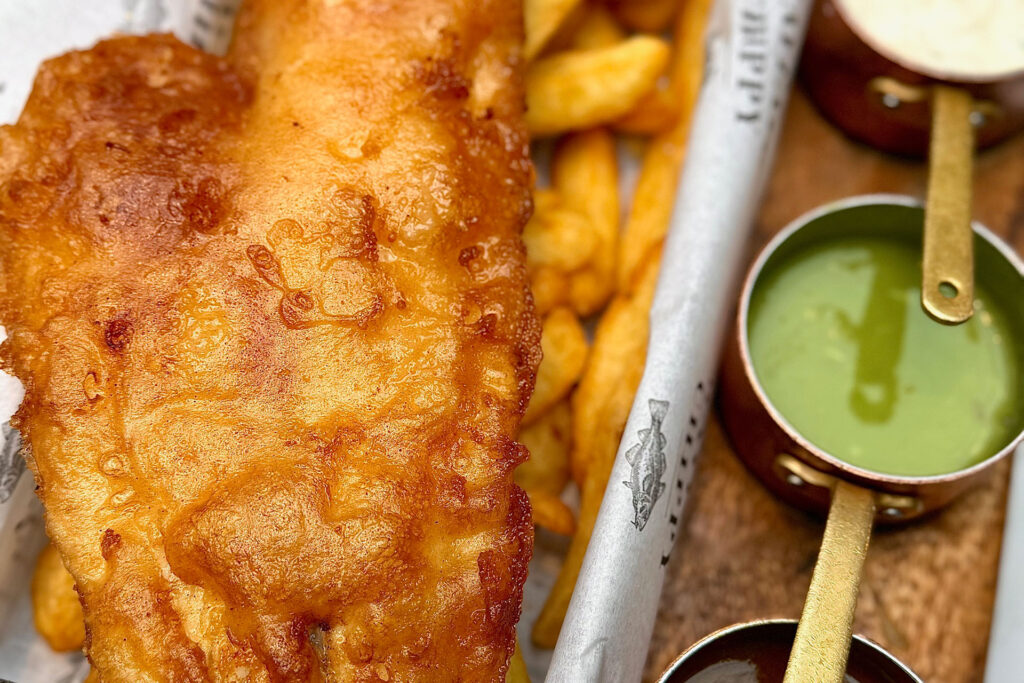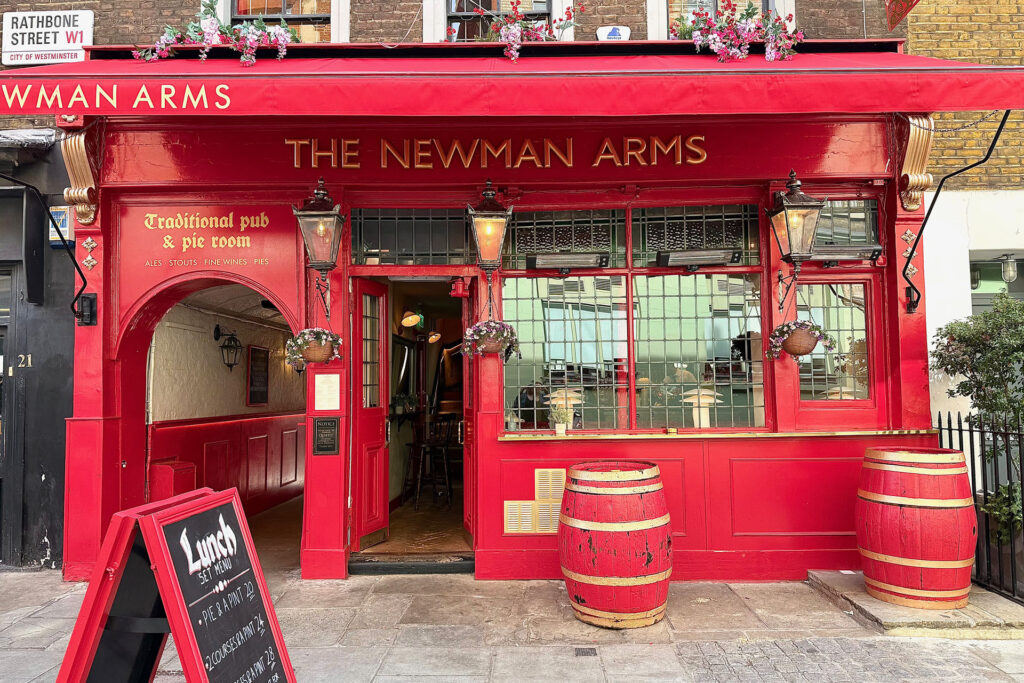
The Christmas holidays is the season when food takes centre stage, and no festive feast is complete without a beautifully bronzed turkey – or so we’re led to believe.
While a turkey is the traditional meat serve at many family gatherings, our ever-changing palettes are often looking for alternatives; sometimes, it’s good to break with tradition and find other tasty, new options.
And in the spirit of changing things up, we have sourced the ultimate holidays recipes from some of our favourite chefs in London. You’ll discover the most delectable Black Truffle Beef Wellington, a moreish Roast Coronation Chicken, and a Vegetarian tart which will have everyone wanting a slice.
These dishes bring an element of surprise into those traditional, festive suppers and weaves in exciting, new culinary traditions.
Read on to discover our top recipes for a turkey-alternative festive feast!
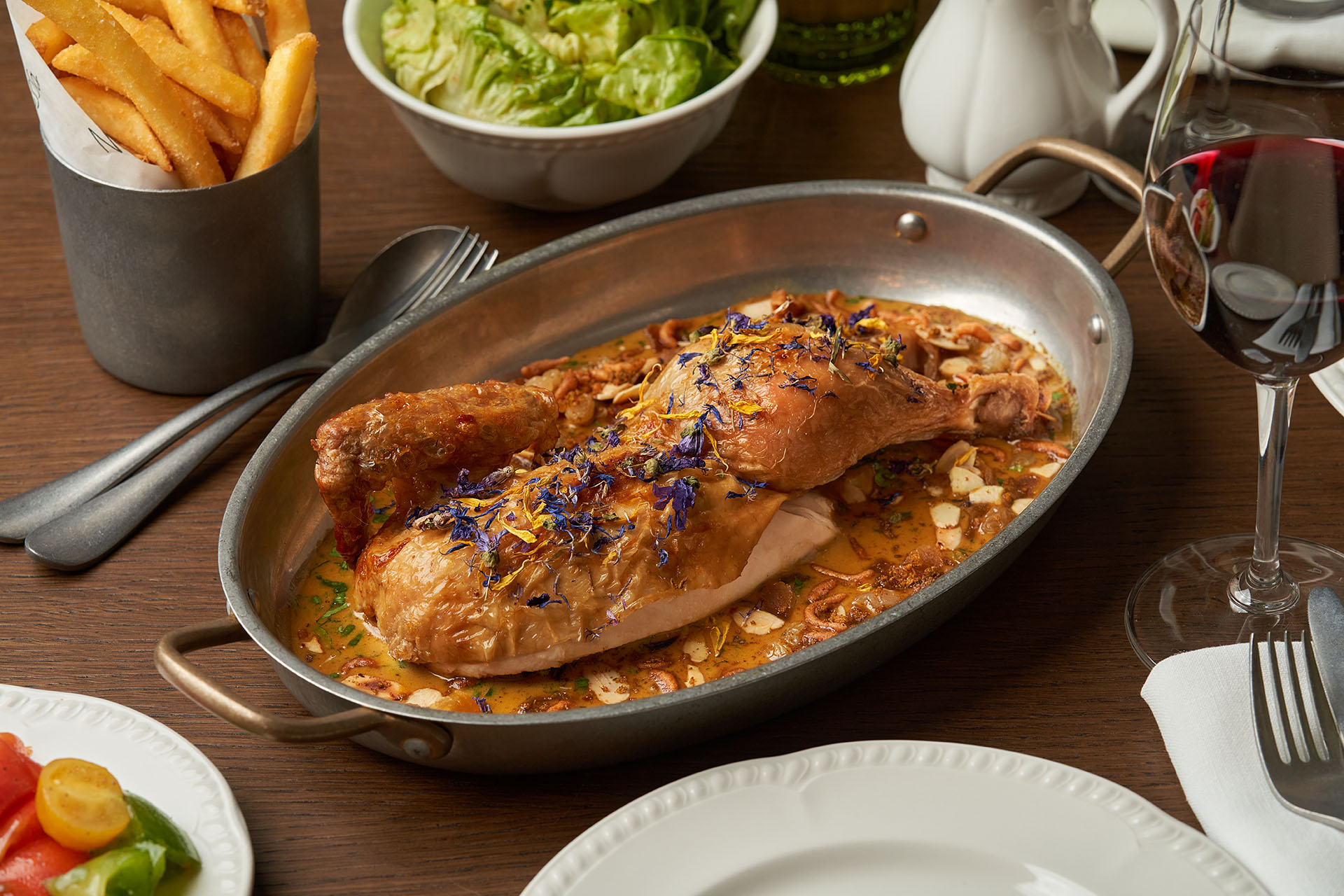
Photo by David Robson
Roast Coronation Chicken recipe
By Tom Cenci, Executive Chef at Nessa
Roast Coronation chicken with an apricot, almond and tandoori sauce, finished with curried scraps & vadouvan and served with a coriander-dressed salad and black pepper fries.
Ingredients
- 1 Whole Chicken
- 50g Salt
- 1 litre of Water
- 500ml Chicken stock
- 250ml Double Cream
- 3g Curry Powder
- 3g Garam Masala
- 50g Gram flour
- 1g Salt
- 5g Curry Powder
- Water
- 30g Flaked Almonds
- 30g Golden Raisins
- 50g Dried Apricots (sliced)
- 1⁄2 Bunch of Fresh Coriander
Method
- First, make the brine by bringing the salt and water to a simmer so all the salt dissolves then allow it to cool.
- Cover the whole chicken with the brine for a maximum of 24 hours, then drain, place the chicken onto a plate and let it dry in the fridge overnight, do not cover it; this will allow the skin to crisp up better when roasting.
- Make the sauce by reducing the chicken stock, double cream, curry powder and Garam masala until it thickens, then set aside, and taste for seasoning.
- Rub the chicken with a bit of oil, then place it onto a roasting tray and roast at 190.C for 45 minutes. Allow the chicken to rest for at least 20 minutes.
- Whilst the chicken is cooking, you can make the curry scraps by mixing the gram flour, salt and curry powder and adding water until it forms a thick batter that can be poured.
- Drizzle the batter into a pan of shallow oil on a medium heat and allow it to crisp up to form little curry scraps, once crisp drain and place onto a plate with some kitchen paper.
- Once the chicken has rested, carve it in half or pieces, depending on how many people you are serving, and place it onto your serving dish.
- Heat up the curry sauce and pour over the chicken. Finish with the flaked almonds, golden raisins, dried apricots, and coriander, then sprinkle with the curried scraps.
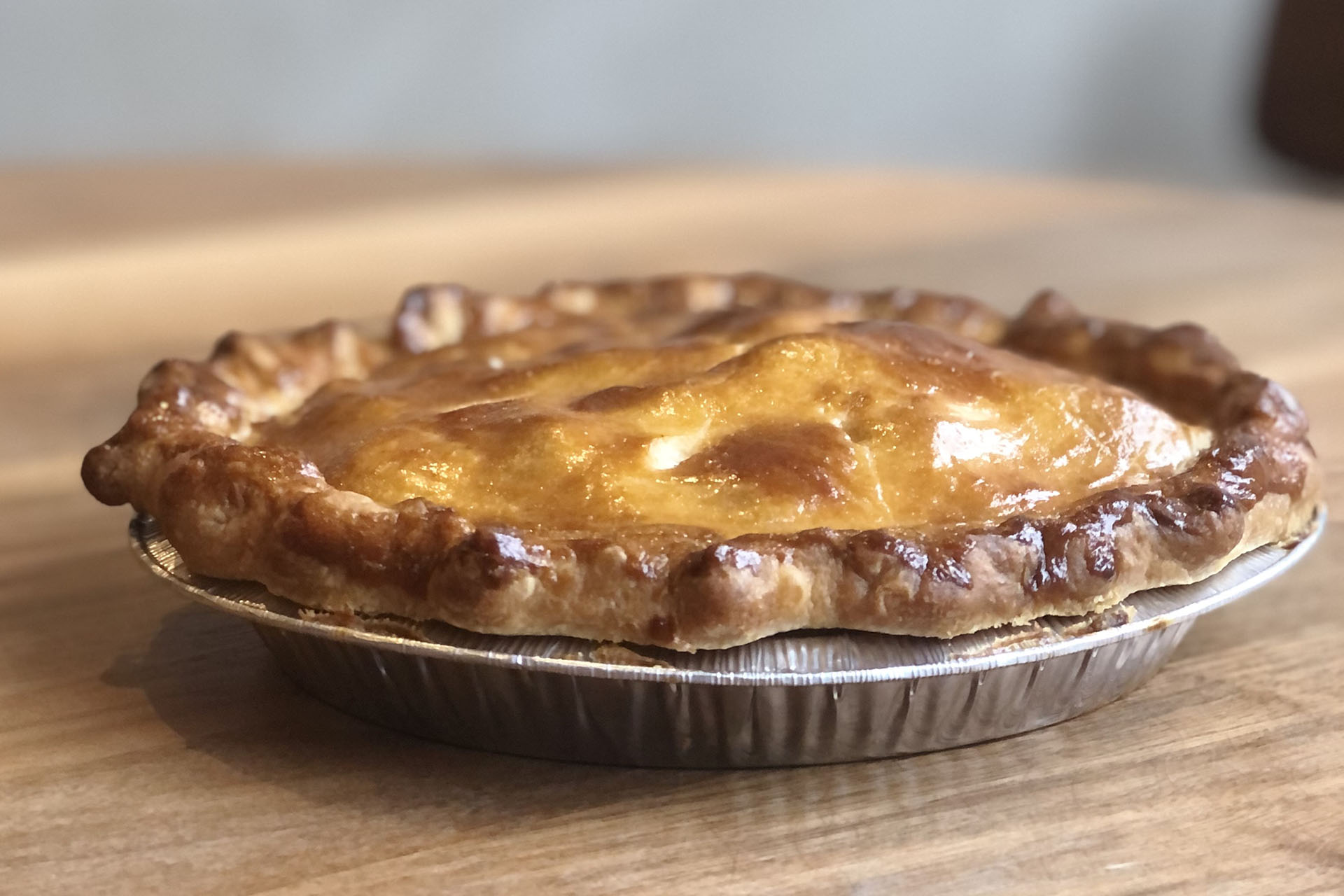
By Trivet
Tourtiere recipe
By Jonny Lake, Executive Chef at Trivet
Tourtière is a French-Canadian meat pie dish originating from the province of Quebec, usually made with minced pork, veal or beef and potatoes. Wild game is sometimes used. It is also a traditional part of the Christmas réveillon and New Year’s Eve meal in Quebec.
Serves 6-8
Equipment
- 1 x 20cm pie tin
Ingredients
For the brisée dough:
- 225g cold unsalted butter
- 275g plain flour
- 70ml ice water
- 2g fine salt
For the filling:
- 500g minced pork
- 200g minced venison
- 120g onion, small dice
- 3 cloves garlic, thinly sliced
- 100g chestnut mushroom, sliced
- 100ml dry white wine
- 50g unsalted butter
- 50g potato, grated
- 2g ground cloves
- 3g ground cinnamon
To assemble:
- 2 circles pâte brisèe
- 450g pork/veal mixture
- 75g picked ham hock
- 20g reduced pork stock
- 1 egg yolk
- 10ml cream
- 1 pinch fine salt
Method
For the brisée dough:
- Cut the butter in 2cm cubes.
- Mix the flour and salt in medium sized bowl then add the butter and rub the flour into the butter between your fingers until you achieve a crumbly texture.
- Add the water and mix with a fork until the dough comes together. Avoid over mixing the dough.
- Wrap in cling film and leave to rest in the fridge for at least 2 hours.
- Remove the dough from the fridge and leave for 15 minutes or until it is warm enough to roll then divide the dough in half.
- Roll out into two circles until it is approximately 5mm thick.
For the filling:
- Sweat the onion and garlic with the butter over medium heat.
- Add sliced mushrooms and continue cooking for 3-5 minutes.
- Add the wine and reduce until almost dry.
- Add the pork and veal mince and the ground spices, mix well then cook slowly for 20 min over low heat.
- Grate the potato onto the mix and cook for a further 5 minutes.
- Season with salt and more spices if needed. Cool down and reserve.
To assemble:
- Pre-heat oven to 230C/220C fan.
- Line the pie tin with one of the dough circles then add the pork/venison mixture.
- Spread the picked ham hock over top and then crumble over the reduced pork stock.
- Mix the egg yolk, cream and salt to make an egg wash and then brush the rim of the dough.
- Place the second dough circle in top and pinch all around to close.
- Brush the top with the egg wash.
- Cook the Tourtière for 20 minutes and then lower the temperature to 180C and cook for another 20-25 minutes until the crust is golden brown and the filling is bubbling.
- Remove from oven and allow to rest for at least 20min before portioning.

Artichoke Tart recipe
By Mauro Colagreco at Raffles
Serves 12 (Makes a 12 IN./30 CM tart)
Ingredients
For the artichoke purée
- 11 lb. (5 kg) Breton artichokes
- Ascorbic acid
- Olive oil
- 1 thyme sprig
- 1 bay leaf
- Unrefined sea salt
For the artichoke strips
- 25 spiny artichokes
- 3 Macau artichokes
- Ascorbic acid
- Unrefined sea salt
For the puff pastry
- 8 1/3 cups (2 1/4 lb./1 kg) pastry (soft) flour
- 2 cups + 1 tbsp. (500 ml) water
- 3/4 cup + 2 tbsp. (7 oz./200 g) softened butter
- 4 tsp. (3/4 oz./20 g) salt
- 1 lb. 10 oz. (750 g) sheet butter (12 x 15 in./30 x 40 cm)
For the filling
- 3 1/4 oz. (90 g) Comté cheese 36 months
- 1 oz. (30 g) black truffle
For the sauce Périgord
- Scant 1/4 cup (1 oz./30 g) finely chopped shallot
- 2 tsp. Madeira wine
- 2 tsp. ruby port
- 1 tsp. sherry vinegar
- 1 cup + 1 tbsp. (250 ml) veal stock
- 1/2 oz. (15 g) black truffle
- Olive oil
For the Citronnette
- 1 1/4 cups (300 ml) mild oil
- 1/2 cup (120 ml) lemon juice
- 1 1/2 tbsp. (1 oz./25 g) yellow mustard
- Unrefined sea salt
Method
For the artichoke purée
- Prepare the artichokes: turn them, scoop out the insides, and thinly slice the hearts. Set aside in a bowl of water with a little ascorbic acid added.
- Drain the artichokes well. Add a drizzle of olive oil to a Dutch oven (casserole dish) and cook the artichokes, without browning them, with the thyme, bay leaf, and salt until tender.
- Blend to obtain a very smooth purée. Cool in a bain-marie.
For the artichoke strips
- Clean the artichokes and cut into strips. Set aside in a bowl of water with a little ascorbic acid added to prevent oxidization.
- Cook them for 45 seconds in boiling water with a little ascorbic acid and salt. Strain and set aside in the refrigerator.
For the puff pastry
- Knead the flour with the water, softened butter, and salt to obtain a smooth dough.
- Let rest for 20–30 minutes in the refrigerator.
- Preheat the oven to 340°F (170°C/gas 4). Roll out the dough into a 20 x 24 in. (50 x 60 cm) rectangle and place the very cold sheet of butter in the centre. Next, fold into three, then roll out again, turn and repeat six times.
- Roll out to a thickness of 1/8 in. (3 mm), cut out a 9 1/2 in. (24 cm) diameter circle and line an 8 in. (20 cm) diameter pie plate (tart tin). Cover with foil and add weights (rice or lentils).
- Chill before blind baking in the oven for 15 minutes.
- Serrate the edge using scissors.
For the filling
- Using a mandoline, cut the Comté into thin slices and spread them over the puff pastry. Finely chop the truffle.
For the sauce Périgord
- In a saucepan, sweat the shallot in a drizzle of olive oil. Deglaze with the Madeira, port, and vinegar.
- Reduce to half over low heat, then pour in the veal stock. Cook until the sauce has a velvety texture.
- Chop the truffle and stir into the sauce.
For the Citronnette
- Blend all the ingredients to obtain a stable dressing. Set aside in the refrigerator.
To Serve
- Preheat the oven to 355°F (180°C/gas 4). Using a spatula, spread the artichoke purée over the strips of Comté in the pie crust (pastry case).
- Scatter over the chopped black truffle. Arrange the artichoke strips on top to form a flower and cook in the oven for 8–10 minutes.
- Once the tart is cooked, cut into slices and serve with the sauce Périgord on one side and the citronnette on the other.
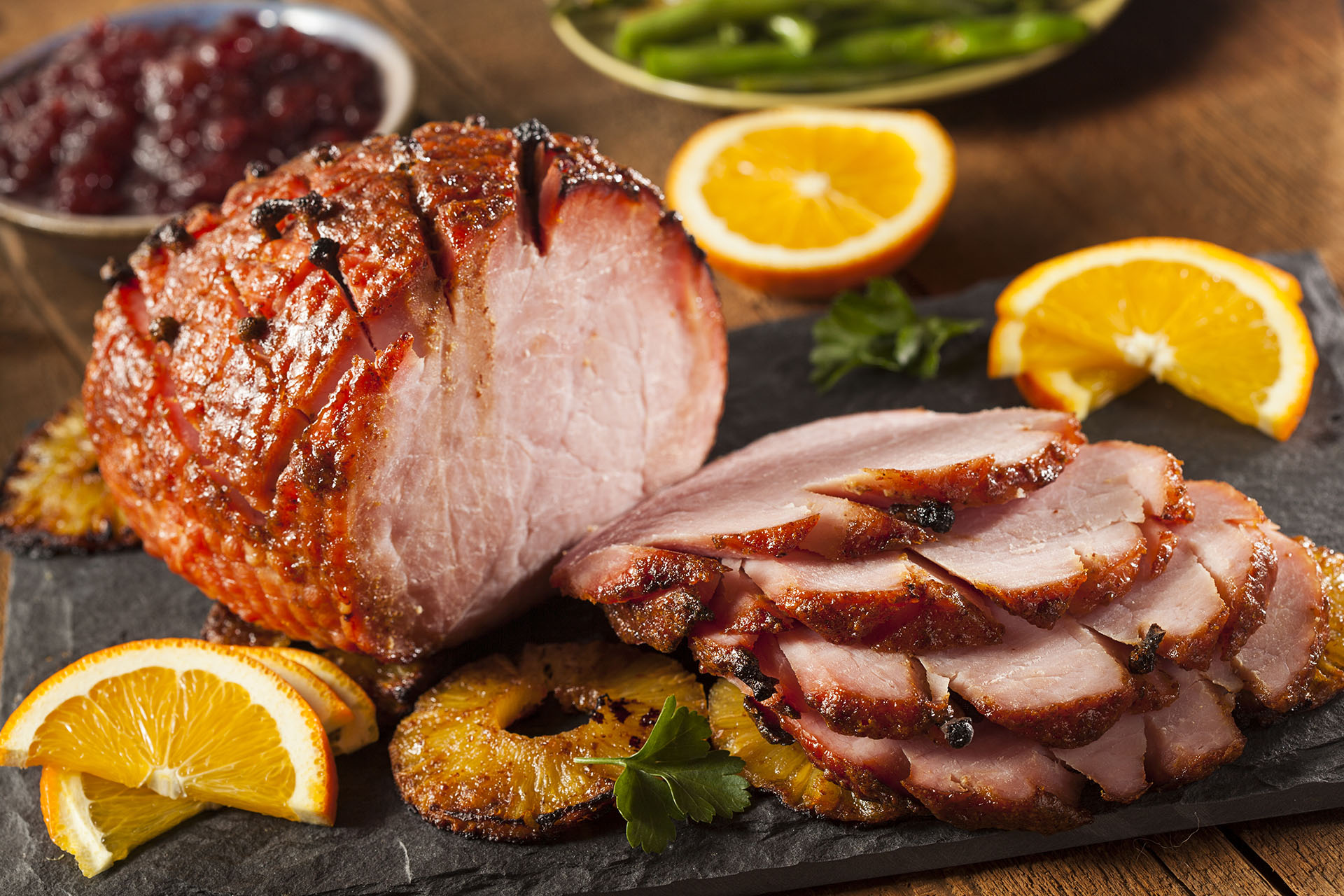
Christmas Spiced Honey Roasted Ham recipe
By Robert Chambers, Head Chef at Luca
Ham is a wonderful compliment or alternative to Turkey. It’s not often you get to cook a whole joint like this, so it’s great to go all out and make something festive and delicious. I also love having a ham the next day, there are so many great ways to keep on enjoying it, especially in a Boxing Day sandwich.
Ingredients
- 4-5 kg free range bone in unsmoked gammon joint
- 2 onions, halved
- 2 fennel, chopped into large chunks
- Half head of smoked garlic
- 1 leek, chopped into large chunks
- 5 leaves of medium sized bay leaf (muslin tied)
- 3 Juniper berries
- 3 star anise or half a cinnamon stick
- 1 tsp black peppercorns
- Skin of 1 orange
- 4 cloves (plus extras for studding the ham)
- A small handful of sage
- A pinch of allspice
- 250g of runny honey
Method
- Place the ham joint in a large saucepan, cover with cold water and bring to a light simmer over low to medium heat, discarding any foam that comes to the surface. Once the foam has stopped rising to the top, add all remaining ingredients, other than honey and cloves for studding the ham.
- Bring back to a simmer and top up the water if reduced, making sure the ham is always submerged in the water with the fat facing up.
- Simmer for approximately 2 hours depending on the size of the ham (20 minutes per 500g as a general rule). When cooking joints of meat like this I would advise using a thermometer, always inserting it into the centre of the joint. When the meat is cooked, the thermometer must read 70c or above.
- Once cooked, carefully remove from the water using a clean towel and the exposed bone to grip it, as well as a large flat utensil for extra support if needed.
- Now place the joint on a baking tray and preheat the oven to 210c/fan assisted oven 190c.
- Using a paring knife, carefully remove the rind from the joint, leaving a thin layer of fat underneath. Lightly score the layer of fat in a diamond pattern before placing a clove in the centre of each diamond.
- Place the ham in the pre-heated oven and bake for 20 minutes, turning the tray halfway through for an even colour and cook.
- While the ham is cooking, pass the cooking liquid through a sieve. Reserve 350ml for the glaze and leave the remaining liquid for soup stock.
- Place 350ml of cooking liquid into a pan with the honey and simmer, stirring continuously until it is reduced to a glaze. Let it cool slightly before glazing to help the glaze stick to the ham.
- When the ham has cooked for 20 minutes, remove from the oven and brush on the glaze, ensuring the whole ham is covered before returning to the oven for 12-15 minutes, basting every 5 minutes until you get a dark golden colour.
- Serve with a warm apple compote*
To make the compote*
- Place 4 Braeburn apples (peeled and diced) into a pan with a knob of butter, 1 tsp of muscovado sugar and a pinch of salt on a low heat, stirring the apples continuously until they break down. Add 1 tsp of cider vinegar and simmer until you reach your preferred consistency
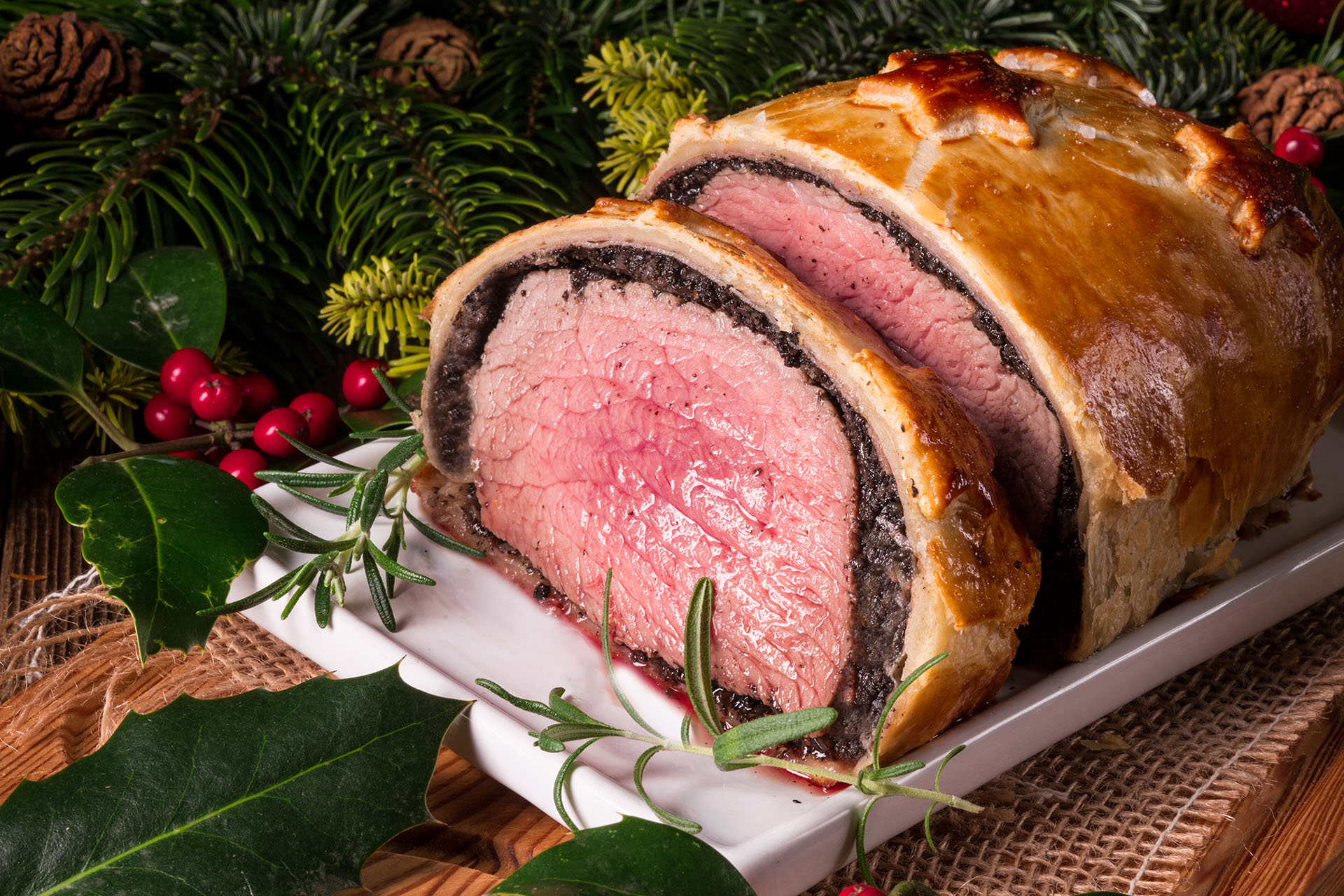
Black Truffle Beef Wellington recipe
By Ramiro Lafuente Martinez at The Connaught Grill
Ingredients
For the Beef
- 1 centre-cut beef tenderloin (around 900gr long fillet), trimmed
- Salt and black pepper, to taste
- 30gr tbsp olive oil
- 40gr Dijon mustard mixed with 15gr honey
For the Mushroom Duxelles
- 250gr of cremini mushrooms, cleaned and very finely chopped
- 40gr cooked chestnuts, chopped
- 20gr toasted hazelnut, chopped
- 30gr unsalted butter
- 40gr shallot, finely chopped
- cloves garlic, minced
- 15gr fresh thyme leaves, chopped
- 30gr black truffle paste
- Salt and ground black pepper, to taste
Step 3 For Montage
- 8-10 slices iberico ham (to completely cover the beef piece)
- 1 sheet puff pastry (about 10×12 inches), thawed but still cold
- 1 egg, beaten, for egg wash
Method
Step 1: Prepare the Beef Tenderloin
- Season and Sear – take the beef tenderloin and season it generously with salt and black pepper. Heat a big pan (enough to fit the tenderloin straight) and add the olive oil. Sear the beef on all sides, around 1-2 minutes per side. After cooking, cold it down in the fridge. (you just want to sear it, not cook it, so straight to the fridge)
- Brush with Honey & Mustard – As soon as the tenderloin is cold down, take a small bowl, mix the Dijon mustard with honey and brush the mixture all over the tenderloin.
Step 2: Make the Mushroom Duxelles
- Wash the mushrooms and cut them until finely chopped. In a big pot add the butter and put it to medium heat, when the butter is melted, add the shallot, and cook until softened. After that, add the garlic, cook it for few minutes and then add the mushrooms, cook the mix until the liquid evaporates, about 10-15 minutes. (make sure is well dry as will help to keep the shape when cutting the piece)
- After it’s cooked remove from the heat and add the thyme leaves, toasted hazelnuts and chestnuts and the truffle paste. Then mix well and transfer to a bowl and let cool.
Step 3: Assemble the Beef Wellington
- Lay Out the Iberico ham – On a large piece of plastic wrap, lay out the Iberico ham slices slightly overlapping, creating a rectangle large enough to wrap around the beef. Spread the mushroom duxelles evenly over the prosciutto layer.
- Wrap the Beef – Place the beef tenderloin on the duxelles-covered ham. Using the plastic wrap, roll the ham tightly around the beef, then twist the ends of the plastic wrap to create a compact cylinder. Chill overnight in the refrigerator to help it set.
- Wrap with Puff Pastry – Roll out the puff pastry on a lightly floured surface. Unwrap the beef and place it on the pastry. Wrap the pastry around the beef, trimming any excess. Press the edges to seal and tuck them under to create a smooth surface.
- Chill and egg wash – Place the wrapped Wellington seam-side down on a baking sheet. Chill in the fridge for another 15 minutes. Preheat the oven to 400°F (200°C). Brush the puff pastry with the beaten egg for a golden glaze, and sprinkle with a few fresh thyme leaves for garnish.
Step 4: Bake the Wellington
- Bake – Place the baking sheet in the oven and bake for 25-30 minutes or until the pastry is golden brown. Use a meat thermometer to check the internal temperature; it should read 120°F (49°C) for medium-rare.
- Rest – Remove from the oven and let it rest for 10 minutes before slicing.
- Serving and Plating – Best garnish for the dish will be a creamy mashed potatoes and a red wine jus.
You May Also Like
London’s Top 3 Must-Try Christmas and Festive Menus
Tis the season of the annual festive menu, and London’s restaurants are brimming with some of...
The Mayfair Chippy Arrives in Knightsbridge
The quintessential fish and chip feast is a meal worth savouring - and not just on ‘fishy’...
Classic Pies and Proper Pints at Fitzrovia’s Iconic Newman Arms
The historic Newman Arms is one of London’s most legendary pubs, newly reopened after an...

